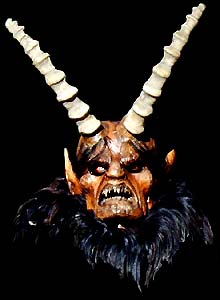 Donald Cammell's and Nicholas Roeg's 1970 film "Performance" is one of my favorite films, a masterpiece of 'psychedelic expressionism'.
Donald Cammell's and Nicholas Roeg's 1970 film "Performance" is one of my favorite films, a masterpiece of 'psychedelic expressionism'.In the film, Chas, an over-eager, too-violent London gangster has to go into hiding after getting into a conflict with his boss. He finds a place to stay in a crumbling London mansion, where a eccentric, decadent, bi-sexual rockstar called mr. Turner (Mick Jagger) and two beautiful girls (Anita Pallenberg and Michèle Breton) form a drug-addled ménage á trois.
The threesome initially resists Chas's entry into their secluded world, but the determined Chas manages to enter into their languid, claustrophobic, almost airless household anyway.
Taken aback by Chas's domineering personality, the three bohemiens endeavor to playfully and mockingly destabilize Chas's identity as a 'normal' heterosexual person through bisexual eroticism, fly agaric mushrooms and rock and roll ... and finally, to obliterate it. This project of destabilization is symbolically violent: when Chas has been tricked into consuming some fly agaric mushroom, Turner says, 'I just wanted to go in there... This blood of this vegetable is boring a hole… penetrating the hole of your face, the skull of your bone…' - foreshadowing the hole Chas will create in mr. Turner's skull when he finally shoots him. It this sense, the symbolic violence visited upon Chas is a brutal violence, a violence that is directed outwards, a hippie 'normalcy' attacking a white heterosexual cockney criminal 'normalcy'.
This normalizing project points towards the reason why mr. Turner has become indifferent, dispirited, uninspired and frustrated by his own lethargy (“Don’t you get it?” shouts the Michèle Breton character: “He’s stuck! Stuck!”): from being a destabilizing, transgressive force, his decadent hippiedom had already become (so soon!) a stabilized force.
And thus the film goes beyond a mere politically correct, moralistic destabilization of 'normal' white heterosexual identities: the bohemian rockstar himself cannot escape the mise-en-jeu of selves either - isolated and listless, mr. Turner is drawn towards Chas's world of violent action, as a moth is drawn towards a flame. What started as a symbolic putting to death (execution) of Chas as a 'square', as a normal person, gradually slips towards a sacrifice of both self and other.
In the end, the symbolic violence visited upon Chas's normalcy is reciprocated by that normal world with literal violence - but by then, Chas and mr. Turner as seperate persons have been dissolved and both moths burn their wings and fall - together. In the final analysis, the violence in the film is not cruel or brutal, but tragic.
The editing of the film is truly disorienting, as the storyline is cut up - fragmented - and projected as if by a kaleidoscope, presenting the viewer with an infinitely-shifting succession of sound, colors and narrative patterns. The film has a wonderful Moog soundtrack by Jack Nitzsche, and stirring musical performances by a bvery young and truly beautiful Jagger - not that I am a Rolling Stones-fan, mind you. Not surprisingly, the film was sampled by Coil on their magnum opus 'Love's Secret Domain'.

Currently, there's an exhibition about Performance at the Drkrm. gallery in Los Angeles, CA. The gallery will display prints of photographs by Cecil Beaton of Mick Jagger, made when Performance was filmed. The gallery's website has an interesting interview with Donald Cammell by David Del Valle.
Also - continuing on the theme of the last post - here is a link to an interesting essay which sees Performance through the lens of Jorge Luis Borges's work.
And here is another link to an article on the film.
































